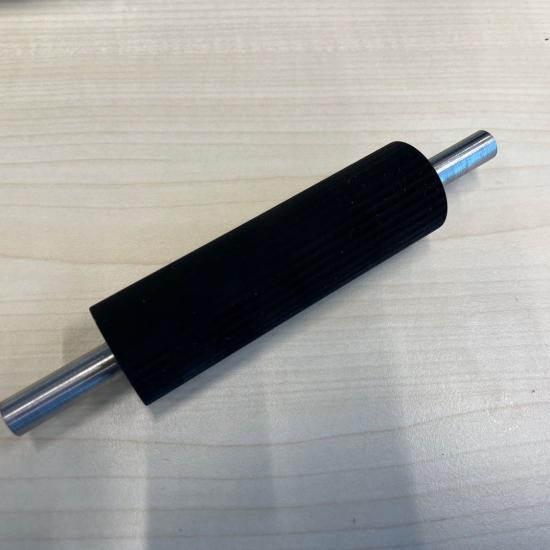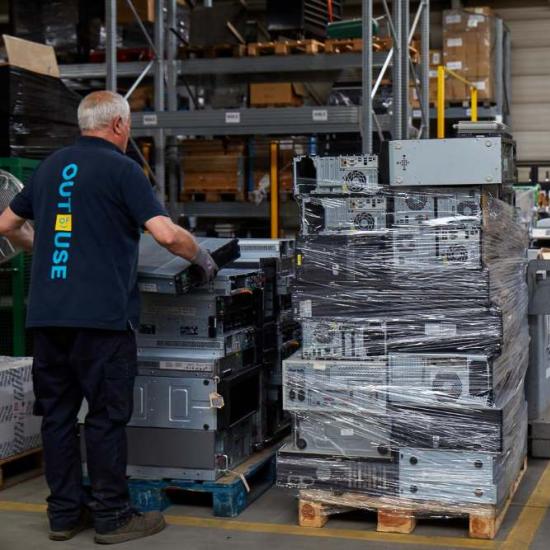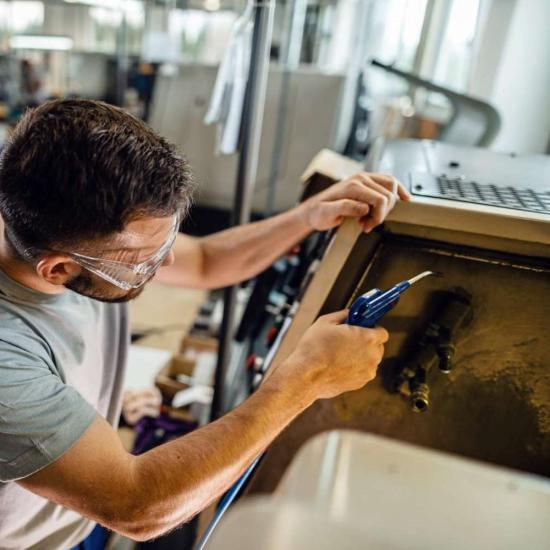A growing group of manufacturing companies are exploring circularity and they are early in the transition process. We see mainly internal leverages, such as building up top-down & bottom-up interactions based on common values, defining feasible actions, building up trust and motivation to take further action. For frontrunners, however, we identify the leverage rather towards stakeholders and their value chain in the form of facilitation in (action) learning, in increasing connections and sharing insights with like-minded stakeholders. This expands the trust from existing only within the company to existing between companies as well. In this publication we explore the different leverages to speed up the transition toward a circular economy in your manufacturing company or value chain.
More and more companies are embracing the circular economy. Some manufacturing companies are in an exploration phase, while other, frontrunning companies already capture some revenue from circular entrepreneurship or are playing an active role in a more or less circular value chain. The most frequently asked questions from all of these companies is: ‘How can we speed up the transition towards the circular economy in our company and within our value chain?’
To answer this question we need to distinguish the company's internal processes, such as the dialogue between top management and the circular practitioners from the processes that enable interactions between multiple companies in the value chains or with other stakeholders.
Top-down & bottom-up dynamics are key when you get started
"Everything starts at the top. If top management believes in the value of circularity, they can quickly set targets."
"Everything starts from the bottom up. If there is some experience with small circular initiatives and projects, these practitioners (experience experts) can quickly identify meaningful follow-up projects."
Both statements are valuable and true. Real progress is sped up if both perspectives meet and mutually influence each other.
Top management has to deal with uncertainties and is in search of economically sound business cases, while the circular practitioners see potential opportunities and request none-linear targets and ditto resources for their circular projects. Consciously building moments of cooperation between top management and the circular practitioners allows becoming familiar with each other’s concerns and insights. This type of organisational learning will bring meaningful targets into focus. Such a target can be seen as a long-term ambition. This is a future ‘us’. Everyone should be able to identify with this future ‘us’ and, above all, it entails on commonly supported values. Explicitly describing those strong common values supports both formal leaders (management) as the informal leaders (e.g., some key practitioners). The result is a powerful, long-lasting motor for your company, enabling to select new circular projects and allocate the required resources.
Confidence triggers motivation and action
Everybody’s own capabilities and experience enable building self-confidence. However, increasing confidence is not only one's own responsibility. You gain confidence, not only from your own success experiences, but also through others' encouragements and support. So, be attentive to give trust to each other, to make the right decisions, to conduct experiments, to gain new insights, to detect risks, to deal with uncertainties, to make explicit that the commonly defined actions are feasible and within reach of the action owner. This is true for the practitioners as well as for top management. Both need to receive signals of trust that motivate them to take next actions.
Refer to previous experience and challenges that were overcome. This review on previous successes helps to provide trust. It is really encouraging to have this type of conversations. Therefore, the top-down and bottom-up open dialogue and regular interaction (formal and informal) are key. How to set up such top-down, bottom-up interactions? It’s easier to hook on existing meeting formats that are already in place than to create a new meeting format that does not replace other meetings. Therefore, try to use quality boards, design review meetings, products or sales meetings, … that have already proven their value. It might be required to extend a section of these meetings to a larger group of attendees, to make sure top management and circular practitioners can exchange insights.
|
Case: Bekaert Bekaert launched a circular initiative by bringing formal and informal leaders from different businesses and units together. The group consisted of persons from different maturity levels, a variety of hierarchical positions and with multiple knowledge and background expertise. The initiative was launched top-down. Bekaert has already been contributing to circular economy across the lifecycle of its products and value chain. The Bekaert top management recognizes the need for continuous improvement in sustainability and is convinced of the strategic importance associated with a circular economy. That is why the global Sustainability & Innovation Team received the target to establish a systematic approach to take circular economy initiatives to the next level establishing a common language within the organization. A number of workshops was organised by the team. They went through a process in which inspiration and knowledge, but also concerns and uncertainties, were discussed in an open and interactive way. The focus was put on a step-by-step approach with feasible actions which provide opportunities to book successes and the trust to move on. When the participants went back to their business units, they were encouraged, because they experienced the trust and beliefs from other group members. Obviously, the story does not end here. Additional interactions within the business units, as well as within the core team, are required to crystallise further the future ‘us’ and circular ambitions. |
Sharing and connecting capabilities to step into new value chains
Manufacturing companies that are building up first commercial income from circular product and services seem to make faster progress when building more in-depth connections with other values chain actors and stakeholders. But also more exploring companies can receive requests from their value chain partners to join circular initiatives and will, as a result, experience the need to build new collaborations.
When companies have enough trust they are confident in speeding up a more intense collaboration outside the company borders. Similarly as to the internal process described above (top-down, bottom-up), a common goal and open interactions are needed now between persons representing their companies. Again, building and maintaining trust is the clue.
Trust is every person’s enabler
Especially in new, unprecedented contexts, which the circular economy brings, we cannot fall back on a history of habits or our usual collaboration patterns. This leads us to an environment in which we need to build new collaborations. This starts with gathering trust. Being trusted and providing trust. The process starts between persons (you and people working for other organisations), and only after a while, it can be extended to trust between companies. In short, the basic elements of trust are authenticity, logic and empathy. This means that you can express your uncertainties as well as your ambitions and circular aspirations while being open to learn about the other’s uncertainties and aspirations. Expressing and sharing this type of thought quickly provides a base layer of trust.
"It's all about trust, and here’s how you can (re)build it": this is one of the topics we discussed in an earlier publication called ‘Dear CEO, learn how to become circular economy officer’, which is interesting too for non-CEOs. You can find it here.
|
In practice The CE Connect learning network offers such an opportunity, in which we facilitate companies to share their successes and to build experience on the capabilities to connect with other companies. A list of good practices was published based on the lessons learned identified during the kick off session in October 2022. You can find the publication here. The issue of trust was also an important key takeaway from our Learning Network CE Connect. Some specific examples from a B2B context, such as selling TCO and Product as a Service, are used as illustrations. You can find them here. |
Do you also want to go through such a top-down-bottom-up process? Let us know! We provide guidance and assure that drive and trust will lead to meaningful and feasible actions? Just like we did at Bekaert.
Remanufacturing, repairing, repurposing, refurbishing, reusing, ... are all valuable circular strategies. The question is how to be sure that you are exploring and testing the most optimal strategy, specifically for an SME context? With the COOCK project "CIRCLE - Remanufacturing as a lever for value creation in a circular manufacturing industry", with the support of VLAIO, Sirris provides you with an approach and practical tools (technologies, tools ...) to help you limit the risks and increase the chances of success.




